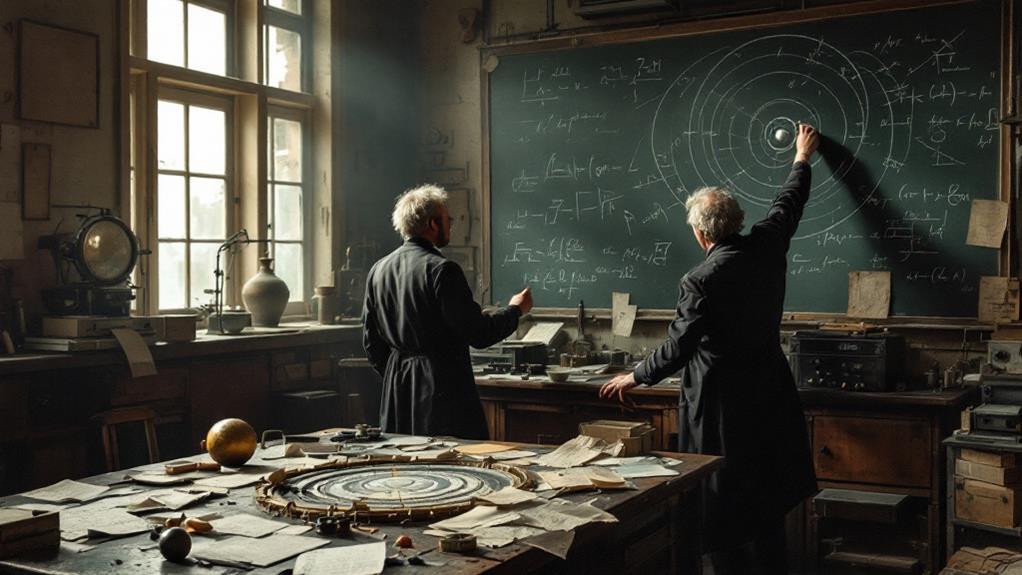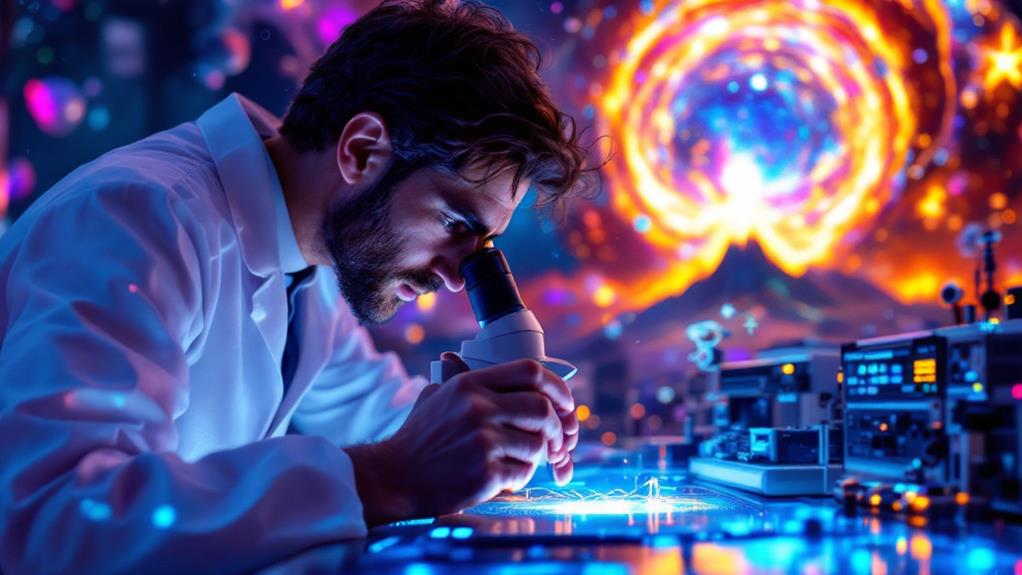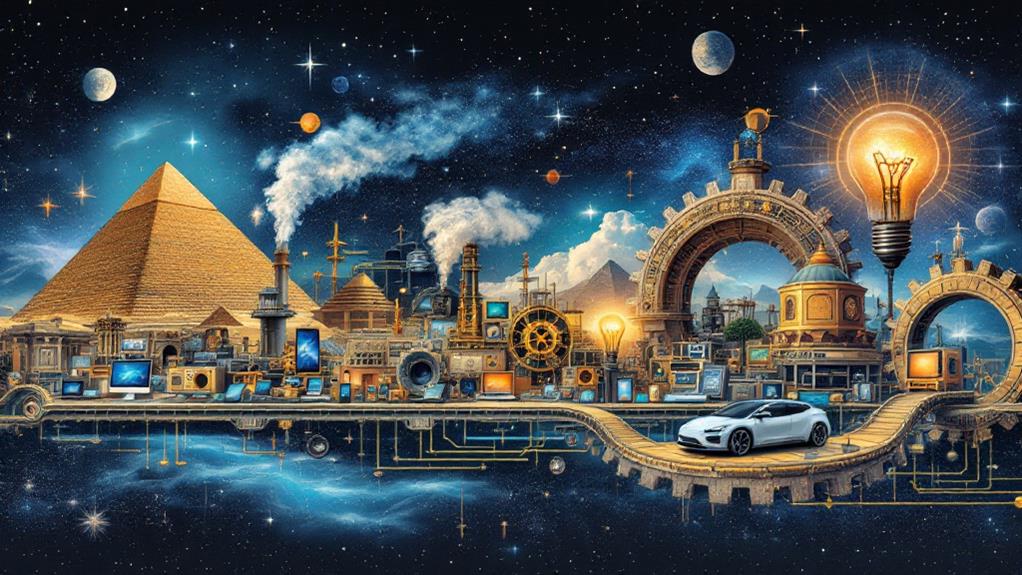Famous Scientific Theories That Turned Out to Be Wrong: Science’s Biggest Revisions

Scientific progress often involves overturning long-held beliefs. Some of history's most famous scientific theories that turned out to be wrong include the geocentric model, spontaneous generation, phlogiston theory, luminiferous aether, Lamarckism, the steady state universe, and miasma theory. These ideas dominated scientific thought for centuries but were eventually disproven through careful observation, experimentation, and improved technology. While incorrect, many of these theories inadvertently led to positive advancements in their respective fields. They paved the way for more accurate understandings and revolutionized various scientific disciplines. The stories behind these discredited theories offer fascinating perspectives into the evolution of scientific thought.
The Geocentric Model
Although it dominated astronomical thought for centuries, the geocentric model of the universe was one of science's most significant misconceptions. You might be familiar with this theory, which placed Earth at the center of the cosmos, with all celestial bodies revolving around it. Ptolemy's model, developed in the 2nd century AD, was the most sophisticated version of this concept, incorporating complex mathematical calculations to explain planetary motions.
For over 1,400 years, the geocentric model remained unchallenged. It aligned with religious beliefs and seemed to match everyday observations. However, as astronomical instruments improved, discrepancies began to emerge. The model couldn't accurately predict planetary positions or explain retrograde motion.
In the 16th century, Nicolaus Copernicus proposed heliocentrism, placing the Sun at the center of the solar system. This revolutionary idea faced fierce opposition but gradually gained support through the work of Galileo, Kepler, and Newton. The geocentric model's downfall demonstrates how even long-held scientific beliefs can be overturned by new evidence and improved understanding. It's a reminder that science is a process of constant revision and refinement.
Spontaneous Generation
Frequently cited as one of science's most persistent misconceptions, spontaneous generation was the belief that living organisms could arise from non-living matter. This theory persisted for centuries, with ancient Greeks like Aristotle and medieval scholars supporting it. You'd find people claiming that mice could spring from wheat and dirty rags, or that maggots emerged spontaneously from rotting meat.
The spontaneous generation theory wasn't easily dismissed. Even when challenged, proponents would offer the equivocation hypothesis, suggesting that while complex organisms couldn't arise spontaneously, simpler life forms could. It wasn't until the 19th century that Louis Pasteur decisively disproved this notion through his famous swan-neck flask experiments.
Pasteur demonstrated that decay organisms, like bacteria and fungi, didn't appear in sterilized broths unless exposed to air containing microorganisms. His work laid the foundation for the germ theory of disease and modern microbiology. The fall of spontaneous generation theory highlights how deeply ingrained beliefs can persist in scientific thought, even when contrary evidence exists. It's a reminder that scientific progress often involves overturning long-held assumptions through rigorous experimentation and observation.
Phlogiston Theory

How could a substance that doesn't exist dominate scientific thought for over a century? Enter the phlogiston theory, a once-widely accepted explanation for combustion and rusting that persisted from the late 17th to the late 18th century.
The theory proposed that all flammable materials contained a fire-like element called phlogiston, which was released during burning. Scientists believed that the more phlogiston a substance contained, the more readily it would burn. They thought metals lost phlogiston when they rusted, explaining why they became lighter and more brittle.
This theory seemed to explain many observations about the combustion process and chemical composition of materials. However, it had a major flaw: some metals actually gained weight when they burned, contradicting the idea of losing phlogiston.
Antoine Lavoisier eventually disproved the phlogiston theory by demonstrating that combustion involved a reaction with oxygen from the air, not the release of a mysterious substance. His work laid the foundation for modern chemistry and highlighted the importance of precise measurements in scientific research.
The phlogiston theory's downfall reminds us that even widely accepted scientific ideas can be overturned by new evidence and better explanations.
Luminiferous Aether
The luminiferous aether was once thought to be the invisible medium through which light waves propagated. You might find it hard to believe, but in the 19th century, scientists were convinced that this mysterious substance permeated all of space. They believed it was necessary for light to travel, much like how sound waves need air to move.
The luminiferous aether hypothesis seemed logical at the time. After all, waves in water and sound waves in air were well understood, so light must need a medium too, right? However, this theory had a major flaw: no one could detect the aether.
Enter the famous Michelson-Morley experiment of 1887. This pioneering study aimed to measure the Earth's motion through the aether. To everyone's surprise, it failed to detect any aether at all. The results were so unexpected that they sparked a scientific revolution.
This failure led to the development of Einstein's special relativity theory, which completely eliminated the need for an aether. It's a prime example of how science evolves, discarding old ideas when new evidence emerges.
Lamarckism

Another once-popular theory that fell by the wayside is Lamarckism, named after French biologist Jean-Baptiste Lamarck. This theory of evolutionary inheritance proposed that organisms could pass on characteristics they acquired during their lifetime to their offspring. Lamarck believed that animals could adapt to their environment and transmit these adaptations to future generations.
You might've heard the classic example of giraffes stretching their necks to reach higher leaves, resulting in longer-necked offspring. While this idea seems intuitive, it's not supported by modern genetics. Lamarckism was widely accepted in the 19th century, but it couldn't explain many observed patterns of inheritance.
The theory's downfall came with the rise of Mendelian genetics and the identification of DNA. We now know that genetic information is passed through genes, not acquired characteristics. Darwin's theory of natural selection, which explains how advantageous traits become more common over time, replaced Lamarckism as the primary mechanism of evolution. Despite its inaccuracy, Lamarckism played an essential role in the development of evolutionary thought and paved the way for more accurate theories of inheritance and adaptation.
Steady State Universe
One of the most influential cosmological models of the 20th century, the Steady State theory, proposed that the universe is eternal and unchanging on the largest scales. This theory, developed by Fred Hoyle, Hermann Bondi, and Thomas Gold in 1948, suggested that as the universe expands, new matter is continuously created to maintain a constant density.
You might wonder how this theory gained traction. It appealed to many scientists because it avoided the philosophical implications of a universe with a beginning. The Steady State model also introduced the concept of a cosmological constant to balance the expansion of the universe.
However, as observational evidence mounted, the theory faced significant challenges. The identification of the cosmic microwave background radiation in 1964 strongly supported the Big Bang theory and contradicted the Steady State model. Additionally, the observed distribution of galaxies and quasars at different distances didn't align with the predictions of a steady state universe.
Today, the Big Bang theory, along with cosmic inflation, is widely accepted as the best explanation for the universe's origin and evolution. The Steady State theory serves as a reminder that even widely supported scientific ideas can be overturned by new evidence.
Miasma Theory

Breathing in "bad air" was once thought to be the cause of diseases like cholera and malaria. This belief, known as the Miasma Theory, dominated medical thinking for centuries. It proposed that foul-smelling air from decaying organic matter was responsible for disease transmission mechanisms. While the theory was incorrect, it inadvertently led to some positive public health measures.
The Miasma Theory's influence on understanding disease and environmental factors can be seen in:
- Urban planning: Cities implemented sewage systems and waste removal to reduce "bad air"
- Hospital design: Wards were built with improved ventilation to disperse miasmas
- Personal hygiene: People placed greater emphasis on cleanliness to avoid "noxious vapors"
- Public health policies: Governments took action to clean up polluted areas
Despite its flaws, the Miasma Theory paved the way for more accurate understandings of disease transmission. It wasn't until the late 19th century that germ theory, proposed by Louis Pasteur and Robert Koch, replaced miasma as the accepted explanation for disease spread. This shift revolutionized medicine and public health, leading to more effective prevention and treatment strategies for infectious diseases.



